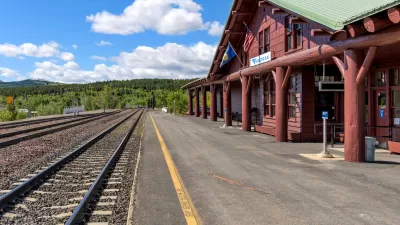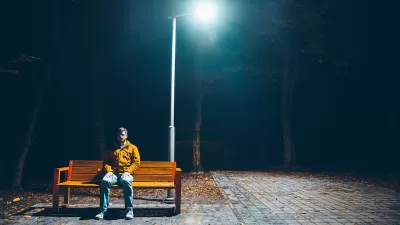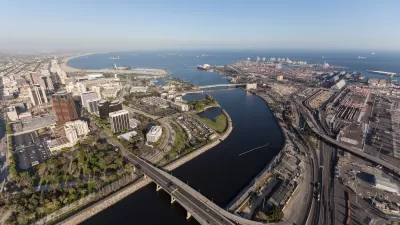Israel's 450-mile long "security fence" is causing controversy not just because of the opposition of Palestinians in the West Bank, but because it will run through sensitive habitat and affect the ability of wildlife to access food and water.
"The fence that is planned to run through this desert is the southeastern tail of a huge and controversial barrier that Israel has been constructing since 2002 to keep Palestinian terrorists in the West Bank from reaching their targets in Israel. This barrier, largely an electronic fence but in some places a stark wall, will be some 450 miles long when complete. The section Israel wants to build where we now stand will slice through the tenuous habitat of the Judean Desert's ibexes, deer, leopards, jackals, and coyotes, not to mention that of the two small Bedouin tribes whose haphazard homes and sparse fields dot the landscape of the desert's marshes.
Construction of the barrier is part of a policy initiated by former prime minister Ariel Sharon to disengage from the greater part of the West Bank, which Israel conquered during the war of 1967. In official Israeli parlance, the West Bank is called Judea and Samaria. It roughly corresponds to the heartland of biblical Israel and contains cities and other sites intimately wound up in the Jewish people's history and religious tradition. These connections, and the mountainous region's strategic importance, have impelled successive Israeli governments to establish Jewish settlements in the region.
But opposition to the fence is not just about religion and politics. The settlers are one of the Israeli subcultures closest to the land. They, as well as the Orthodox-Zionist community of which they (and I) are also a part, are dedicated hikers, campers, and students of the land's flora and fauna. Whatever one thinks of the settlers' political positions, their love of the land and their commitment to preserving the environment is fierce and sincere.
According to a position paper prepared by an Israeli organization called Bimkom, or Planners for Planning Rights, the fence will separate the Bedouin from almost thirteen hundred acres of their agricultural and grazing land, as well as from springs that are vital sources of water. 'There can be no doubt,' the authors claim, 'that the planners of the barrier tended to treat this desert region, in which these rural people live, as an empty area in which the location of the fence is not of great importance. But it is a region rich in natural resources for the Bedouin, who have learned to use them.'
The plans for the fence, drawn up with the cooperation of the Israel Nature and National Parks Protection Authority, the state body responsible for conservation, call for tunnels to allow small mammals to be able to cross under the fence. That will help to a certain extent, but [critics] say that foxes, jackals, and other such creatures are too big for the tunnels and that in any case there is no way to know whether the animals will even find and use tunnels built large enough to allow them to pass."
FULL STORY: Fencing Israel

Study: Maui’s Plan to Convert Vacation Rentals to Long-Term Housing Could Cause Nearly $1 Billion Economic Loss
The plan would reduce visitor accommodation by 25,% resulting in 1,900 jobs lost.

North Texas Transit Leaders Tout Benefits of TOD for Growing Region
At a summit focused on transit-oriented development, policymakers discussed how North Texas’ expanded light rail system can serve as a tool for economic growth.

Why Should We Subsidize Public Transportation?
Many public transit agencies face financial stress due to rising costs, declining fare revenue, and declining subsidies. Transit advocates must provide a strong business case for increasing public transit funding.

How to Make US Trains Faster
Changes to boarding platforms and a switch to electric trains could improve U.S. passenger rail service without the added cost of high-speed rail.

Columbia’s Revitalized ‘Loop’ Is a Hub for Local Entrepreneurs
A focus on small businesses is helping a commercial corridor in Columbia, Missouri thrive.

Invasive Insect Threatens Minnesota’s Ash Forests
The Emerald Ash Borer is a rapidly spreading invasive pest threatening Minnesota’s ash trees, and homeowners are encouraged to plant diverse replacement species, avoid moving ash firewood, and monitor for signs of infestation.
Urban Design for Planners 1: Software Tools
This six-course series explores essential urban design concepts using open source software and equips planners with the tools they need to participate fully in the urban design process.
Planning for Universal Design
Learn the tools for implementing Universal Design in planning regulations.
Ascent Environmental
Borough of Carlisle
Institute for Housing and Urban Development Studies (IHS)
City of Grandview
Harvard GSD Executive Education
Toledo-Lucas County Plan Commissions
Salt Lake City
NYU Wagner Graduate School of Public Service





























